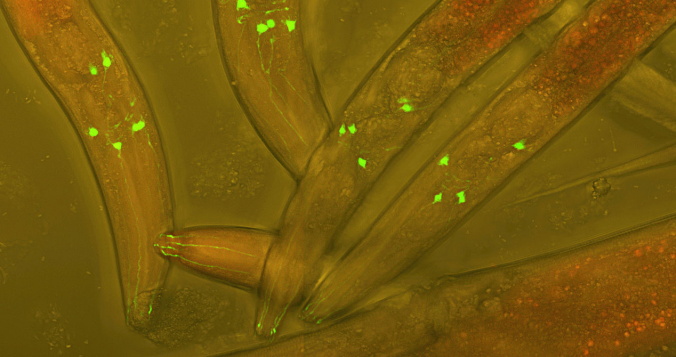
Human sexuality is obviously complicated. But it’s a mistake to think that, if you could somehow strip away human culture, sex would get simple. Even if you could find the simplest animal out there with a sex life, you wouldn’t find that imaginary simplicity.
This week I’ve written an essay on just such an animal, the worm Caenorhabditis elegans. With only a thousand cells in its entire body, the worm is unquestionably simple But it’s also arguably the best-studied animal on the planet. And yet its sex life–featuring self-fertilizing hermaphrodites with some males on the side–remains bizarrely mysterious.
I’ve written an essay for the online magazine Evolution: This View of Life on C. elegans, its strangely complicated sex life, and how that sex life–like other things in biology–is only starting to make sense in the light of evolution. Check it out.

